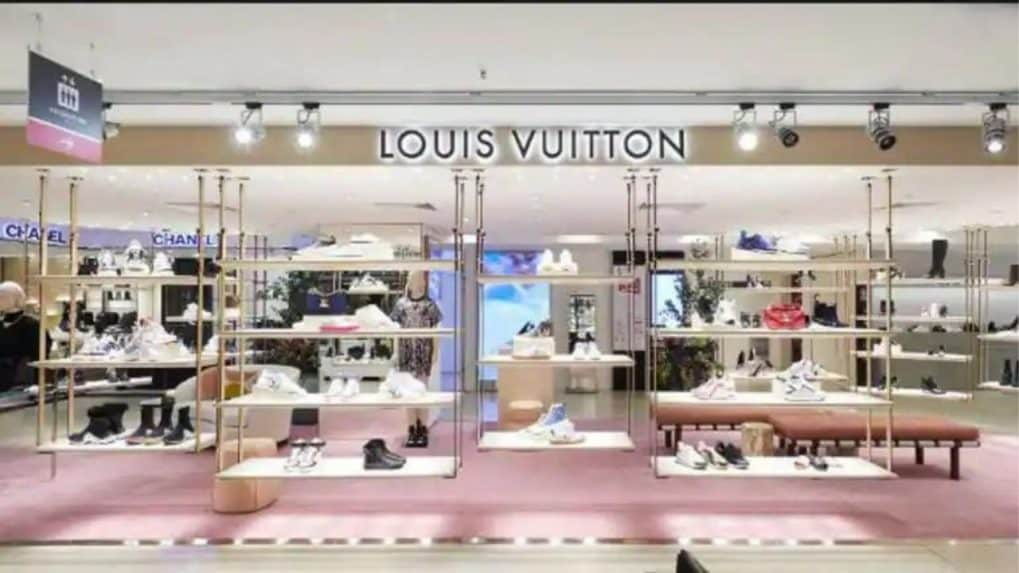Premium and luxury brands increase ad spends by 10 percent
India's luxury market is forecast to expand to 3.5 times its current size, reaching $85-90 billion by 2030 due to rapid economic growth.
ADVERTISEMENT
With a focus on high-value Intellectual Properties (IPs), premium brands in India have increased their advertising spend by 8–10 percent. As premium and luxury brands witness a surge in revenue growth, advertisers are investing in sports properties, while some are also opting for experiential mediums to reach a premium consumer base. Sectors such as cosmetics, fragrances, and automobiles are spending heavily on advertisement.
According to a report by Bain and Company, India's luxury market is forecast to expand to 3.5 times its current size, reaching $85 to $90 billion by 2030 due to rapid economic growth. These factors position India as the fastest-growing luxury market globally.
Jio World Plaza, which opened last year in BKC, Mumbai, hosts global luxury brands like Louis Vuitton, Gucci, Burberry, Valentino, Dior, Balenciaga, Rolex, Bottega Veneta, Cartier, Bulgari, and Jimmy Choo. The 750,000 square foot shopping center is now home to the first Tiffany & Co., Versace, Bulgari, and Pottery Barn stores in India. The mall boasts a total of 66 internationally recognized brands.
Sports Properties in Demand
D’Decor’s premium brand FabriCare has allocated Rs 200 crore for advertising and marketing, while the overall brand allocates Rs 500 crore for a three-year period. FabriCare has advertised on high-value IPs like Koffee with Karan and IPL.
Ajay Arora, Managing Director of D'Decor, said, “We spend heavily on FabriCare for advertising and marketing because it is a new premium brand, while De’Decor is an established brand that does not require much marketing and ad spending.
Elaborating further, Arora said, “Consumers are moving more towards digital and are engaging with it as a medium. The digital pie chart is expanding, and the pie chart for mass media for a premium brand is shrinking. So, less TV and more digital. We will spend on platforms where premium consumers are and will continue investing in such IPs.”
Hema Malik, Chief Investment Officer, IPG Mediabrands India, said, “Lately, we are seeing more brands opting for experiential as a medium. We see more local celebrities endorsing international brands. Overall, there is a growth of almost 8 to 10% in investment. However, we need to understand that these brands grow from year one to year two, while fewer brands enter the category. If one has to see the category growth in media spends, it will be between 12 to 15%.”
Malik added, “Many brands have invested in IPL, which is a relatively mass event. Omega has invested in Olympic sports and partnered with athlete Neeraj Chopra. Omega is another premium brand prominent in ad spending.”
Evocus, the black alkaline water brand, has invested in high-value IPs such as IPL and Olympics. Many celebrities, such as Virat Kohli, Malaika Arora, Karan Johar, Badshah, and Shruti Haasan, have been spotted consuming the alkaline water.
Aakash Vaghela, Co-founder and Managing Director of Evocus, said, “We have witnessed significant revenue growth, with a 100 percent increase over the past year due to the rise in consumer spending on quality products. This growth trajectory is expected to continue as more consumers prioritize health and wellness. As we introduce new innovative solutions under the Evocus brand, we anticipate sustained growth and reach.”
Vaghela added, “Our advertising spend has seen a considerable increase to enhance our brand's reach and visibility. Currently, we allocate approximately 30 percent of our revenue to advertising, compared to 20 percent two years ago. We advertise across multiple mediums, including digital platforms, social media, select print, and other suitable platforms to reach our target audience effectively.”
Targeted Media Now a Preferred Choice
Spotify expects ad revenue growth of over 30 percent during the upcoming festive season. Explaining why advertisers choose Spotify for their premium products, Arjun Kolady, Head of Sales at Spotify India, noted, “Advertisers are focused on premiumization, aiming to move consumers up the value chain by increasing average selling prices and basket sizes. They understand that to achieve this, they must target audiences with the right purchase behavior and consumption patterns. Spotify fits well into this premiumization journey across all categories we work with.”
“For instance, if an FMCG conglomerate wants to advertise low-priced or non-premium products, Spotify may not be the best platform. We typically operate at the higher end of brand products in all the categories we engage with,” he concluded.
Deleise Ross, Senior VP & Business Head, Mudramax, said, “In the past, the demand for luxury products in India was mainly driven by higher-income individuals looking to showcase their social status. However, in recent times, there has been a steady increase in demand from the affluent middle class, who view luxury products as a symbol of achievement.”
Ross further said, “Premium and luxury brands have increased their advertising spending by approximately 8–10%, with the highest interest being in cosmetics, fragrances, and automobiles. Instead of traditional brand advertisements, luxury brands are now focusing on content branding and native advertising with relevant publishers. The shift from traditional to targeted media is now the preferred choice for luxury and premium brands.”
The surge in premiumization in India is boosting brand revenues while also driving the country’s AdEx. Observing the growth trajectory of premium and luxury brands in India will be fascinating, especially as the demand for mass products eventually gains momentum.

